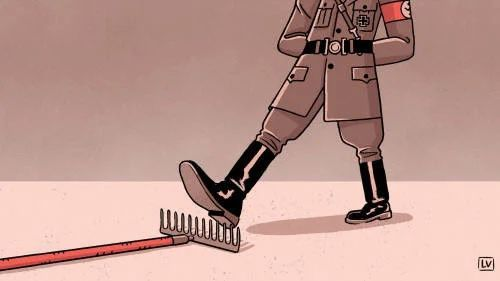
In late-1938, Nazi Germany's occupation of Czechoslovakia began. Jan Opletal was a student of medicine at Charles University, Prague. On 28th Oct, 1939, Opletal was among the students who decided to commemorate the anniversary of Czech Independence (1/6) 

The students called for resistance against German occupation and distributed flyers & leaflets. Across the nation, anti-occupation sentiment was swayed. People stoned German-owned shops and sang the national anthem publicly (2/6)
As the Czech police opted to remain pacifist out of sympathy, German forces opened fire on the protesters. Opletal was shot in the stomach and hospitalized. His death, two weeks later (11th Nov) put fire to the fuse (3/6)
On 15th Nov, a procession set out to carry Opletal's body from Prague to his home in Moravia. The procession was joined by thousands of students, and soon turned into a mass protest against the German occupation (4/6)
The German authorities hit back with deadly swiftness. Across occupied Czechoslovakia, higher education institutes were ordered to be closed down. More than 1200 students were arrested and sent to concentration camps (5/6)
On 17th Nov, 8 students & 1 associate professor were executed without trial. Most of the executed students were student-leaders who were vocal against the occupation. 17th November is now commemorated in most countries as #InternationalStudentsDay" (6/6) 

Jan Opletal image: Fair use, en.wikipedia.org/w/index.php?cu…
NYT Headline image: rarenewspapers.com
NYT Headline image: rarenewspapers.com
• • •
Missing some Tweet in this thread? You can try to
force a refresh








